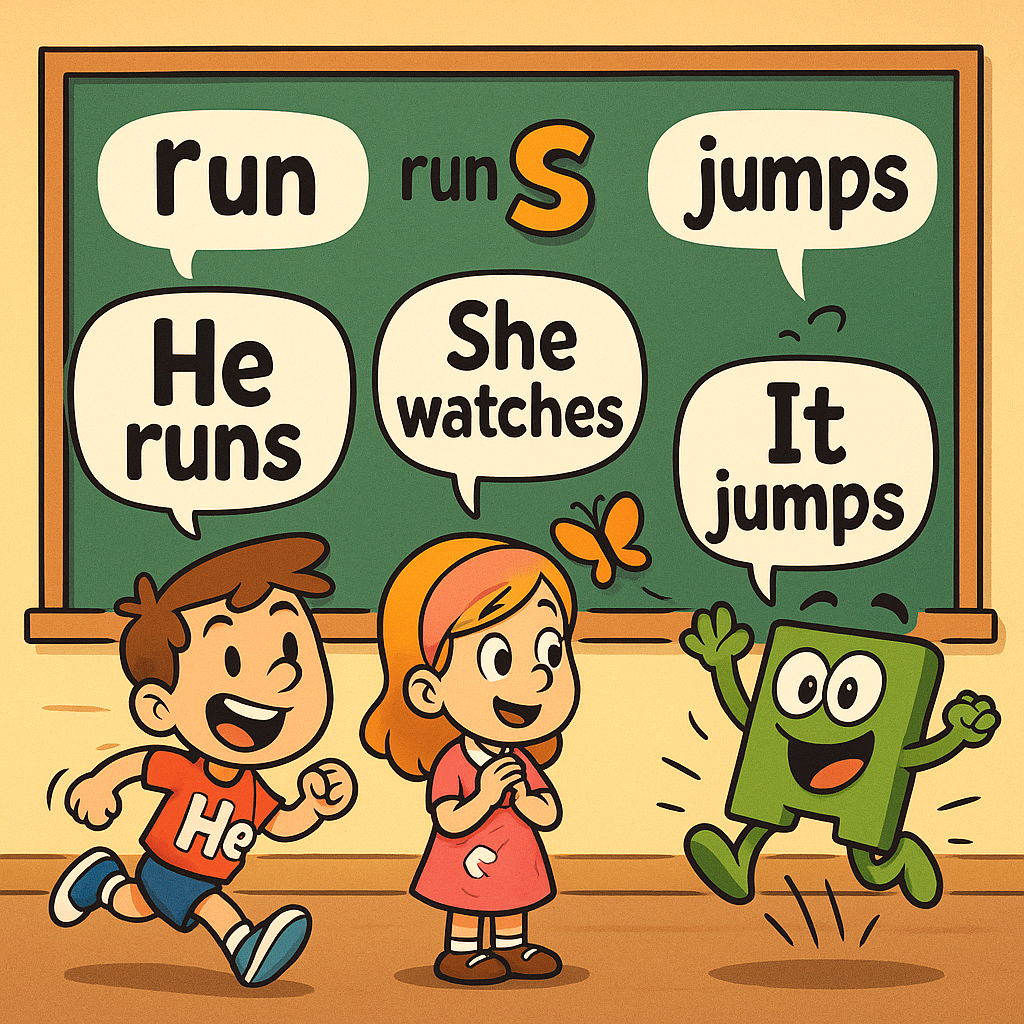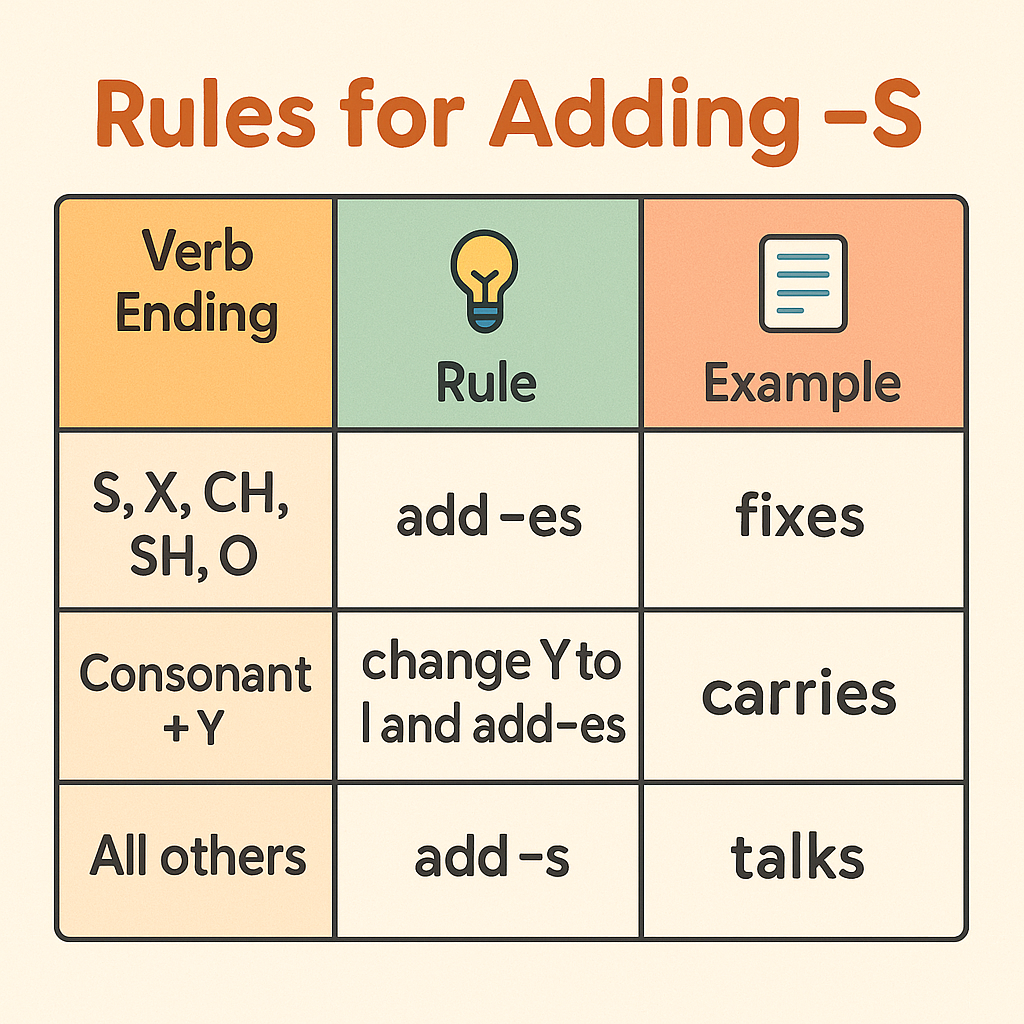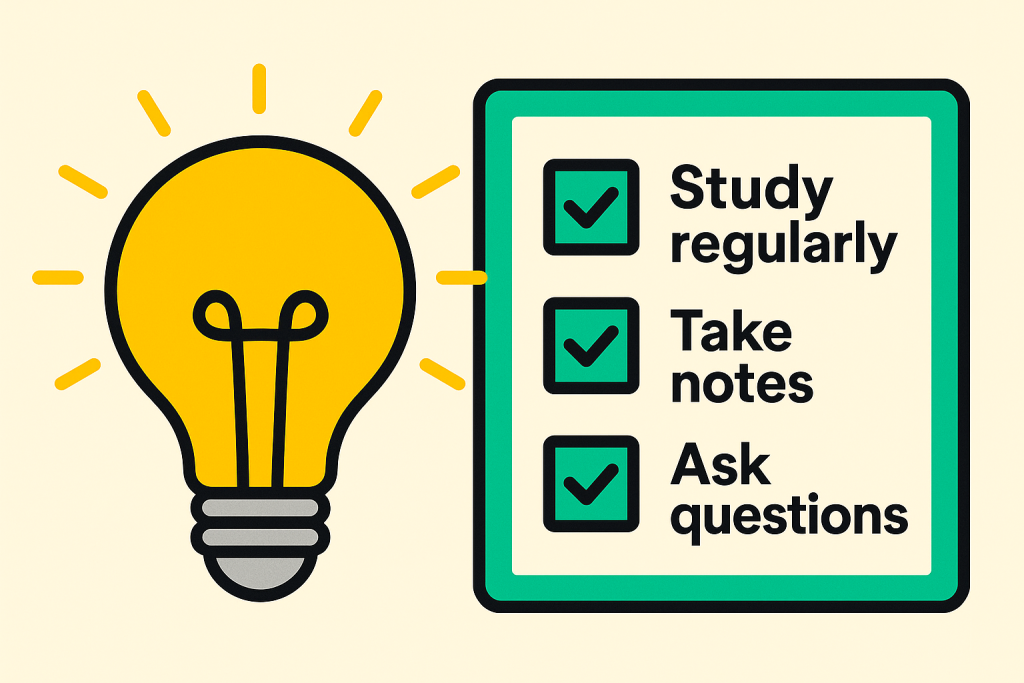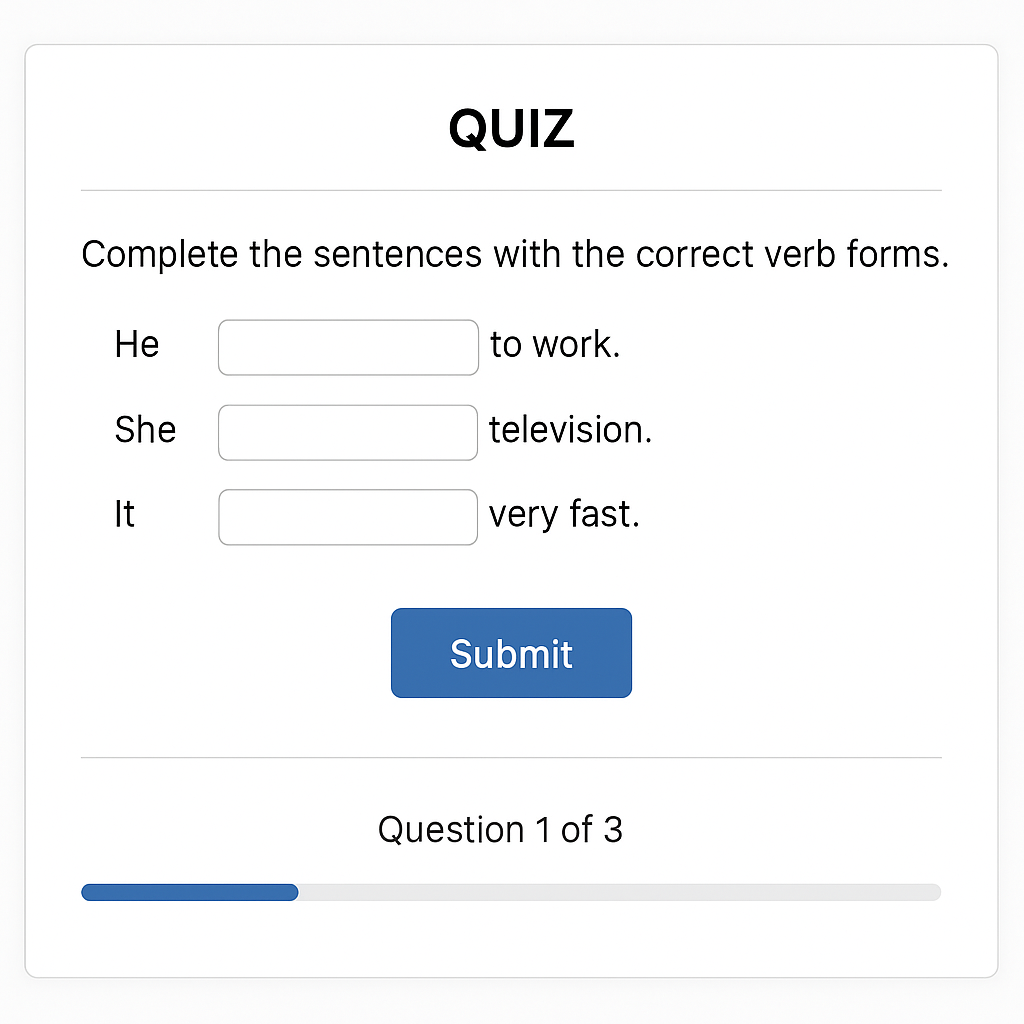
Why Verbs End in “S”: A Beginner’s Pain Explained
Let’s paint a picture. You’re in your first English conversation, you want to say “He run fast”, and the person you’re talking to gives you a confused look… like you just said “He pineapple fast.”
Yep. That tiny “s” you forgot? It makes a big difference.
Understanding verbs ending in s is essential for beginner and intermediate learners because it shows you’re using the present simple tense correctly. It’s not just grammar nerd stuff—it’s about sounding natural and avoiding the classic mistakes English learners make daily.
In this post, you’ll learn:
- The basic rules for adding “s” to verbs
- Some sneaky exceptions
- The most common mistakes to avoid
- A mini quiz so you can check your skills
Whether you’re writing a sentence, chatting with friends, or just trying not to embarrass yourself in front of your English teacher, these tips will save you.
The Golden Rule: He, She, It Gets the “S”

Present Simple + Third Person Singular = “S”
Here’s the simple rule: In the present simple tense, when the subject is he, she, or it, you add an s to the verb. That’s it.
Basic Examples
- He walks to school.
- She eats breakfast at 8.
- It rains a lot in October.
You are not walking. He is. So he gets an “s.” That’s grammar justice.
Spelling Variations
| Verb Ending | Rule | Example |
|---|---|---|
| -o, -ch, -sh, -x, -ss | Add -es | go → goes, watch → watches |
| Consonant + y | Change to -ies | study → studies |
| Vowel + y | Just add -s | play → plays |
For more sentence structures like this, check out our guide on Understanding Simple Sentences.
Where You Use These Forms

- Daily routines: “He brushes his teeth.”
- Facts: “Water boils at 100°C.”
- Scheduled events: “The train leaves at 9.”
If you want a broader explanation of this tense, the British Council’s grammar guide has some fantastic beginner-friendly material.
Exceptions and Common Mistakes
When NOT to Add “S” (Please, Stop Doing This)
English wouldn’t be English without a few chaos sprinkles.
Plural Subjects
Plural subjects don’t take “s” on the verb:
- They run every day.
- My parents work late.
Modal Verbs
Modal verbs ignore the “s”:
- She can swim.
- He should study.
Still confused about how auxiliary verbs work with conditionals? Try our conditional sentences guide.
Common Learner Mistakes
| Incorrect | Correct |
|---|---|
| She go to school. | She goes to school. |
| He watch TV. | He watches TV. |
| The cat like tuna. | The cat likes tuna. ✅ |
Tips to Avoid Mistakes

Use the “he test”:
Can you replace the subject with “he”?
If yes → Add that “s.”
For a deeper dive into verb forms, Cambridge English has a clear breakdown with more examples.
Quick Test: Are You a Grammar Wizard Yet?
Let’s see if your brain was actually working while reading all that.

Fill in the blanks using the correct form of the verb in parentheses.
- She __________ (watch) Netflix every night.
- He __________ (like) pizza with pineapple.
- It __________ (rain) a lot in April.
- My friend __________ (study) at university.
- The dog __________ (bark) at the mailman.
- He __________ (go) to the gym after work.
- She __________ (teach) math.
- My parents __________ (live) in Spain.
- They __________ (play) football every weekend.
- He __________ (have) a big car.
Answer Key
- watches
- likes
- rains
- studies
- barks
- goes
- teaches
- live
- play
- has
🧠 Pro tip: Say the sentences out loud. If it sounds like a toddler wrote it, something’s missing. Probably the “s.”
Conclusion: Mastering Verbs Ending in “S”
We covered:
- When to add “s” (present simple + third person singular)
- When not to (plural subjects, modal verbs)
- Classic mistakes to avoid
- A practice quiz to seal the deal
Now don’t just scroll past and forget it—practice. Get it wrong a few times. Then get it right. That’s how language works.
Want more grammar help?
Browse all our grammar articles or take a look at our guide to the future tense to strengthen your grammar even further.
FAQ
Q1: Why do we add “s” to verbs in English?
A: Because English needed a way to punish beginners. But seriously—when using the present simple with he, she, or it, you add “s” to show correct subject-verb agreement. Otherwise, it sounds like toddler-speak.
Q2: What are some verbs that end in “s”?
A: Pretty much any verb in third person singular form. Examples: runs, eats, likes, studies, watches. Not “go”, unless you enjoy getting corrected.
Q3: Why doesn’t “I goes” make sense?
A: Because “I” isn’t third person. “I goes” is like putting pineapple on pasta—it just hurts everyone.
Q4: Do plural subjects need “s” on the verb?
A: Nope. They walk, not they walks. Plural means more than one person to annoy, so English spares them the “s”.
Q5: Is “He go” correct in any context?
A: Only if you’re quoting a caveman or writing a terrible screenplay. Correct form: He goes.
